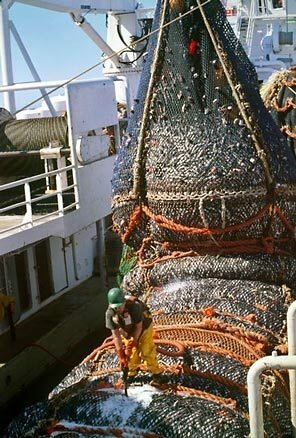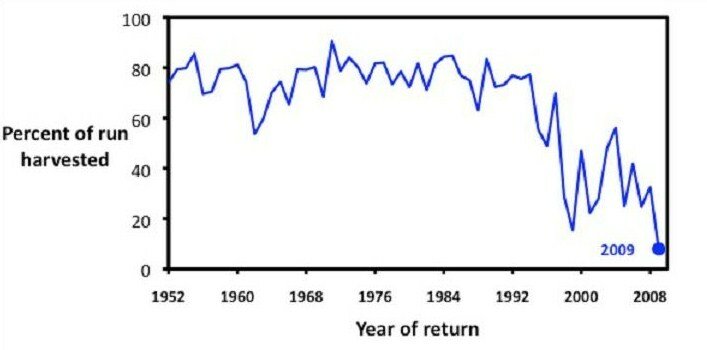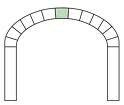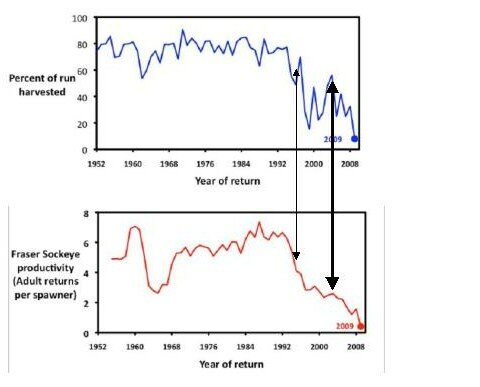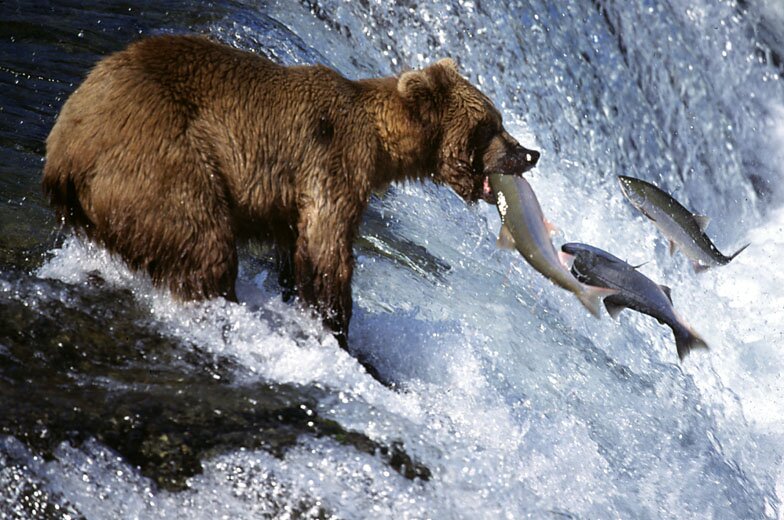I don’t know what else to say other than… I think I see a bubble ready to burst…
Today there was an “Exchange Traded Fund” (ETF) launched today by a company in New York — . An ETF is sort of like a mutual fund, however it is traded on stock exchanges like a company.
The ETF launched today is the (Ticker: FISN on the New York Stock Exchange NYSE).
Apparently:
This is the first ETF globally targeting the fishing industry. The fishing industry is comprised of two main components: commercial fishing and aquaculture. Commercial fishing represents those companies directly involved in the capture of fish from wild fisheries, while aquaculture represents those companies that supply fish through fish farming operations.
Want to know two of the top three holdings?
Cermaq and Marine Harvest — companies both with open pen salmon farms on the BC Coast.
_ _ _ _ _ _ _
Here’s the theory lying behind this investment scheme…
 Wow, sounds like a great investment opportunity…?!?!
Wow, sounds like a great investment opportunity…?!?!
Expansion of the middle class around the world… the drop of trade barriers and more bilateral agreements (e.g. another set of phrases for “colonization”)…
Global fishery trade has increased combined with more distant water fleets?
Hmmm… I wonder why?
Maybe because fish stocks subject to commercial fisheries around the world are in deep shit and folks are having to go further and wider to find fish… or simply fishing further and further down the food chain?
Sure wouldn’t mind seeing the rate of subsidies on this either?
In the 1990s, the United Nations Food & Agriculture Organization (UN FAO) suggested:
…that the operating costs of fisheries around the world exceeded commercial revenues by over $50 billion each year. Without subsidies, the world’s fishing industry would be bankrupt.
The World Wildlife Fund suggests:
Even as fish stocks dwindle, some of the world’s richest nations are paying billions of dollars to keep flagging fishing industries afloat through fishing subsidies. The result: a growing series of economic, social, and environmental crises around the world.
Estimated at tens of billions of dollars per year, these subsidies are equivalent to roughly 20% to 25% of the value of the landed fish catch worldwide. This scale of subsidization is a huge incentive to expand fishing fleets and overfish.
Hmmmm…. sounds like a great investment to me. It’s sort of like the auto industry or the oil industry — some of the most subsidized businesses on the planet.
It’s a negative sum game… the bubble will burst. And it won’t be individual’s investments and retirement plans that implode —- it will be entire nations, and citizens will go down with it…
(Anyone see the current debt of the United States?)
_ _ _ _ _ _ _
Here’s the comforting graph that accompanies this little marketing brief on the Global X website…

Bubble?
It seems that this investment scheme has been launched because it appears that this trend can continue forever…
Well… Global X and investors… I have news for you… world catch of fish plateaued at the end of the 1990s and may actually be on a downward trend now. We’d have a better idea if some countries didn’t lie about their catch data — e.g. falsely inflated…
Global X response: ‘but there’s aquaculture…’
-

- bubble II?
Well… at this point in time much of that graph – the blues and green portions – require other fish to feed the farmed fish…
I think that’s also known as a “negative sum” gain…
Maybe the wisest thing I see on the marketing material for this ETF:
-

- Risk?
The risk include “…the possibility of depleted fish stocks as a result of overfishing…”?!
Hmmmm… yeah. You mean like 75% of the world’s fish stocks?

marketing bumpf?
Yes, however, there is absolutely no way that this is sustainable though.
Especially with the continued practice of bottom trawling and by-catch thrown overboard.
Absolutely no way.
This is as twisted a scheme as Bre-X gold, or Enron… or the Marine Stewardship Council certifying Fraser sockeye fisheries as sustainable the year that the stocks experience an unprecedented collapse.
if you’re a wise investor ‘short’ this stock… just like you should ‘short’ any commercially exploited fish stocks. Or the US dollar, or US real estate…
(‘shorting’ means you make money when the stocks collapse… fish or financial)
Schemes like this will simply increase the pressure on corporation and some countries to further expand and grow fishing fleets and processing facilities on fish stocks that absolutely CAN NOT support more FISHING pressure. (or increase the scale of fish farming — like open-pen salmon farming — in sensitive coastal areas worldwide).
As I’ve suggested multiple times on this site, and will continue to — show me where companies like Cermaq and Marine Harvest are providing farmed salmon to needy and hungry people and countries. There sure as hell aren’t many folks in the “growing middle class” buying salmon at $15/lb to feed their families…
What a bizarrely short-sighted world we live in…







